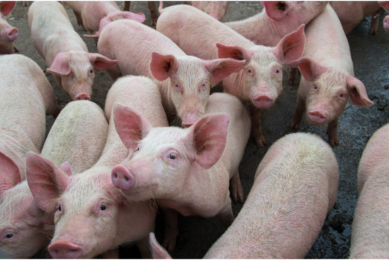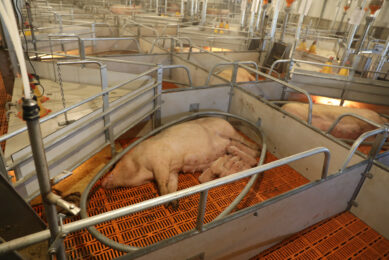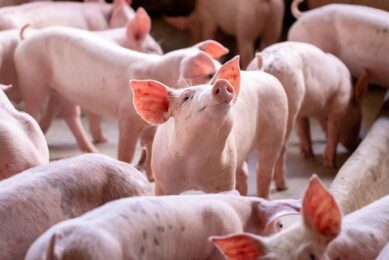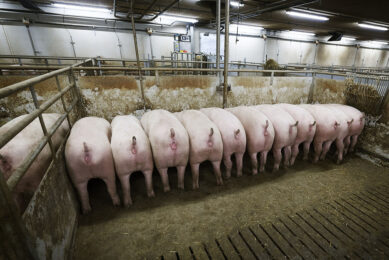Mycoplasmal arthritis – a niggling disease problem?
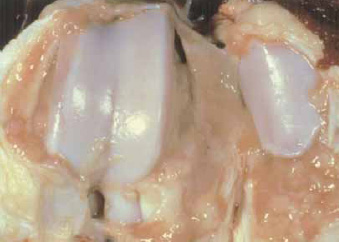
Mycoplasma arthritis caused by Mycoplasma hyosynoviae, in most herds does not cause a major clinical problem but in certain farms or boar studs it can be a recurring, niggling problem, when new gilts or boars are brought in. The disease has caused an abundance of questions recently. So what is happening? Is it the new stock being infected with M. hyosynoviae as they come on to the farm?
By David Burch, veterinarian, Octagon Services, Berkshire, UK
The infectious agent, M. hyosynoviae is widespread in pigs with reports from around the world including the USA, Australia, Japan and Europe. In early work, surveys were carried out particularly in lungs, as another mycoplasma, M. hyopneumoniae, was commonly found there. Although it could be found in the lung in about 8%-29% of samples and not necessarily associated with enzootic pneumonia type lesions, it was most commonly found in the pharynx and tonsils of the pig, in about 70% of samples.
Sows can carry the infection and it is possible to transmit it to piglets but it is thought at a very low level until about six weeks of age. US work showed that weaning even up to four weeks of age can halt transmission to piglets. The infected sow will also pass on maternally derived antibodies to the piglet via the colostrum and milk and this seems to protect for up to eight to 12 weeks of age, although colonisation and immunity is developing during that nursery phase. Clinically, there was no disease reported below ten weeks of age, suggesting an age or weight relationship, although Danish experiments have shown that pigs as young as six weeks could be infected intravenously and cause the disease, as well as in 13 week old pigs, so there is no direct age effect.This suggests that antibodies are important in preventing clinical disease but not necessarily preventing colonisation of the organism in the pharynx and tonsil.
Typical pattern
Figure 1 demonstrates a typical pattern of M. hyosynoviae infection and immunity as judged by antibody titres and that pigs of 12 weeks old and above were fully immune. Of interest, the gilts from
Figure 1 demonstrates a typical pattern of M. hyosynoviae infection and immunity as judged by antibody titres and that pigs of 12 weeks old and above were fully immune. Of interest, the gilts from
the gilt pool, went lame after they were transported to the commercial breeding unit at 20 weeks of age, usually within 21 days of arrival. This strongly suggests that the stress of movement etc. to the new unit resulted in the M. hyosynoviae penetrating the blood stream, probably via the tonsil, and then lodging in their predilection site, the joints.
From Danish artificial challenge work, it takes approximately four to nine days for clinical arthritis to develop from infection. The organism colonises the synovial membrane in the joint, causing inflammation (see photo), which results in pain and lameness. It does not appear to attach to the cartilage lining the joints or be associated with osteochondrosis. It causes a non-purulent arthritis and swelling of the joints.
As several joints are infected, the lameness can be variable from simple leg lifting to the gilt commonly adopting a ‘dog-sitting’ position to take the weight off its hind legs. This frequently results in reddening of the perineum, which is easily observed when they stand up and they may find it more difficult to get to feed and water.
Recovery
The mycoplasma can usually be recovered from infected joints between three until 21 days post infection. The synovial damage is variable but in severe cases can cause fibrosis and chronic, recurring leg problems, which might require the animal to be culled. Infection of the tonsil is persistent and facilitates the spread of the disease via the respiratory route to other pigs. There appears to be some variability in the pathogenicity or severity of disease caused by some isolates and it has been observed that several different genotypes can be found infecting a single herd.
The mycoplasma can usually be recovered from infected joints between three until 21 days post infection. The synovial damage is variable but in severe cases can cause fibrosis and chronic, recurring leg problems, which might require the animal to be culled. Infection of the tonsil is persistent and facilitates the spread of the disease via the respiratory route to other pigs. There appears to be some variability in the pathogenicity or severity of disease caused by some isolates and it has been observed that several different genotypes can be found infecting a single herd.
In the UK, some atypical cases were observed. In one case, the disease showed up at a gilt multiplier farm. The farm’s sow unit was separate from the rearing unit by about 1 km and the growing gilts at about 50 kg bodyweight were breaking down with lameness caused by M. hyosynoviae (see Figure 2) which was confirmed by culture. The sows did not appear to be infected as they were negative serologically. The outbreak in the gilts’ yards was quite severe with about 25% of the animals going lame. There was a serological response in the gilts but it was comparatively low. The gilts were kept in a non-intensive straw yard basis but the quarantine area for incoming gilts was close to the gilt-rearing area rather than the sow site. Presumably, low levels of infection were coming in from the quarantine site as these gilts also had high titres.
Treatment
A number of antibiotics are active against M. hyosynoviae, including the pleuromutilins, tiamulin and valnemulin, macrolides such as tylosin, lincosamides such as lincomycin, tetracyclines and the fluoroquinolones enrofloxacin (see Table 1).
A number of antibiotics are active against M. hyosynoviae, including the pleuromutilins, tiamulin and valnemulin, macrolides such as tylosin, lincosamides such as lincomycin, tetracyclines and the fluoroquinolones enrofloxacin (see Table 1).
These Danish MIC data was also confirmed more recently by Stipkovits (2004) based on Hungarian isolates of M. hyosynoviae. Tiamulin (Denagard – Novartis) is particularly active against M. hyosynoviae and both tiamulin and lincomycin (Lincocin – Pfizer) have been used by injection and orally in feed and drinking water to successfully treat and prevent the development of the infection. Tylosin and the tetracyclines do not seem to be as clinically effective. The antibiotics need to readily penetrate into the joint fluid in sufficient concentrations to treat the infection. Mycoplasma hyosynoviae also shows a distinct resistance pattern to tylosin but a susceptible ‘wild type’ pattern to tiamulin (see Figure 3).
Although M. hyosynoviae appears to be spread worldwide, fortunately, it does not cause a clinical problem of mycoplasmal arthritis in every herd. Stress, even in relatively immune carrier pigs, appears to be a major inducer of the infection, hence when boars and gilts are transported to new farms they break down with the disease. Prompt treatment by injection of clinical cases and good nursing to ensure they can get access to feed and water will help improve recovery.
Metaphylactic treatment either in feed or water of new arrivals appears to control the disease developing well and hopefully this niggling disease can be avoided.
Source: Pig Progress magazine Volume 27. No. 2 (2011)



